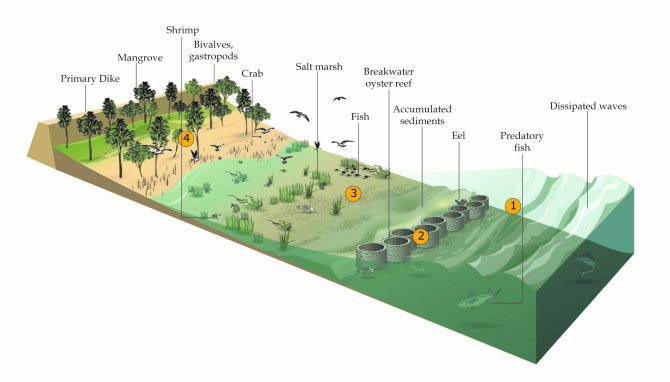
News
Oyster reefs used to counter large waves
Bangladesh is struggling with the consequences of climate change, but increasing attention is being paid to a natural ally that can help in the fight against rising sea levels: oyster reefs. PhD candidate Mohammed Shah Chowdhury of Wageningen Marine Research analysed the impact of these reefs on Bangladesh’s coastal defences and concluded that they make effective breakwaters, as well as benefiting biodiversity.
Large concrete rings placed off the coast of the Bengal island of Kutubdia to protect the coastline have been colonised by oyster populations of the species Saccostrea cucullata. For his PhD, Chowdhury studied the development of these populations and their effects on the environment. He found that the oyster reefs function effectively as breakwaters: the force of waves between 0.5 and 1 metre high is reduced, while waves lower than 0.5 metre are completely blocked. The oyster reefs also stop the sandbanks from eroding and promote the development of salt marshes (see picture below).

Benefits for biodiversity
Oyster reefs also have other ecological and economic advantages. They attract shellfish, fish and crabs, among other species, for whom the reefs provide habitats for feeding, shelter and reproduction. Larger predators such as catfish and rays are in turn attracted to these smaller creatures. The oyster reefs not only greatly benefit biodiversity, they also provide sustainable fisheries for the local population.
Chowdhury deliberately focused on the subtropical coastline of his homeland: 'I believe Bangladesh is more vulnerable to climate change than any other country. Tens of thousands of people are already fleeing because their land has been lost, and this could become millions, as sea levels rise even higher. It’s great that our research is helping to find solutions based on natural processes to protect coastlines like that of Bangladesh.’